Are you seeking enlightenment, or adventurous escape? Rishikesh has the answer to both, writes Vandana Kanoria
“Devotedly with a pure heart, who so ever comes to Rishikesh, the Brahmteertha, (the supreme pilgrimage) and stays one night, becomes Godly.”
In this land of gods there are more than a few places suffused with sacredness. Here one can hear faint echoes of divinity and “contact eternity through the supreme conduits of truth and beauty”.
Rishikesh is where you can go in search of your inner Om or channel your inner daredevil. Whether you are seeking enlightenment or adventurous escape — Rishikesh is teeming with ashrams, yoga schools, white-water rafting companies, adventure sports and vegan restaurants (by law, the town is vegetarian and no alcohol is permitted). The vibe is both relaxed and reverent — and consequently attracts an eclectic mix of genuine Hindu devotees and gurus as well as western hippies, spiritual dilettantes and adrenalin junkies, who come in search of that difficult-to-capture moment of bliss.
The city has its own hustle bustle complete with fruit and flower vendors and Internet cafes in almost every lane. This is the city where spirituality and adrenaline rush walk hand in hand.

In 1968, the Beatles came to this corner of India to study transcendental meditation and stayed for weeks at Maharishi Mahesh Yogi’s ashram — and wrote some forty songs many of which are collected in the 1968 White Album.
The search for truth, enlightenment, or an authentic experience with the divine, leads people to travel to sacred sites that have been ritually separated from the profane space of everyday life. Here, they experience something out of the ordinary – a transformation, transcendence, or a life-changing event, that marks a transition from the mundane world of our everyday existence to a special and sacred state. Here the ordinary becomes sacred – temples, mountains, groves of trees, rivers, rocks become palimpsests of stories of wondrous acts of the gods, miracles and heartfelt prayers of devotees. Transformation of places like Rishikesh into sacred space, usually occur due to a continuous layering of myths and performance of mystic rituals and because they are threshold places. Rishikesh is the gateway to the most sacred of places – Badrinath, Kedarnath and Gangotri-Yamnotri.
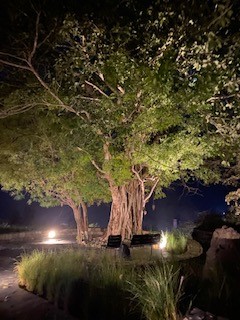
Skanda Purana one of the oldest Puranas mentions Rishikesh as a part of the legendary “Kedarkhand”. This was the site of fabled the Indrakund. Legends state that Lord Rama did penance here for killing Ravana; Lakshmana, crossed the Ganga, using two jute ropes at the point where the present Lakshmana Jhula remade in 1927, stands. At the place Bharat performed penance, Jagat Guru Adi Shankaracharya constructed the Bharat Mandir temple. It is here that Lord Shiva, the compassionate one, consumed the world destroying poison, Halahala, holding it in his throat, and thus becoming known for all eternity as Neelkanth. Emotional devotees pray at the Neelkanth Mahadeva Temple, carrying the holy Ganga water to pour over the Shivalinga, helping to cool the burning in the Lord’s throat.
Hrishikesh – Lord of the senses, is one of the names of the lord Vishnu, and thus the city is so called. It is believed that Raibhya Rishi performed austerities on the banks of the Ganga. After killing the demons Madhu and Kaitabha Lord Vishnu saw the sage meditating and blessed him. The Skanda Purana mentions that Vishnu gave him this divine message: “As long as you have performed Supreme Tapasya by controlling your senses, let the place be recognised by Hrishikesh.” Another legend says that a fierce fight broke out between Lord Shiva and Agni who being cursed, prayed here for redemption, the area today is aptly known as Agni Tirth.
From antiquity and until present the conviction has persisted that prayer or the performance of religious duties are more effective in places where saints were born, died, or wrought miracles.
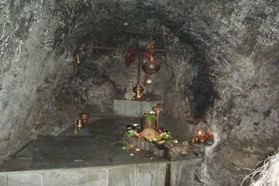
It is believed that meditation in Rishikesh brings one closer to attainment of moksha, as does a dip in the holy river that flows through it. One of the most intriguing places is the Vashishtha Gufa, a deep, almost mystical cave, situated in the middle of a grove of Ficus trees. To reach this cave, one has to climb down around 200 steps. It is believed sage Vashishtha and his wife, Arundhati, meditated here, for the salvation of mankind. There is a small shivlinga and people come here to meditate and experience something otherworldly.
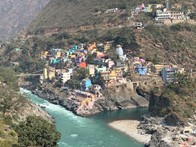
“Ganga has been a symbol of India’s age-long culture and civilisation, ever changing, ever flowing, and yet ever the same Ganga.” So said Jawaharlal Nehru.
Every Indian has some emotional connect with the river. After all, she descended from the heavens to wash away the sins of mankind. Trickling from Gomukh to Gangotri, the Alaknanda and Bhagirathi rivers unite at Devaprayag to form the Ganga. Here, at Rishikesh, the river leaves the Shivalik Hills and flows in all her pristine glory, rushing over boulders on the last legs of her journey from the Himalayas before descending to the plains of northern India. Rituals happen along on the banks, at all hours of the day. As I walked along the shores, I saw symbols of faith and worship scattered everywhere – Shiva Lingas, altars, places where people have created spaces to feel a greater connection to the divine; rocks which are painted with the sacred symbol ‘Om’ or just a slip of vermillion; flower petals that float in little pools of water between rocks, evidence of little personal pujas.
The impossibly blue water, sometimes turning emerald green, flows, surrounded by forested hills. Small temples dot the banks where kirtan can be heard at all hours. Evenings are charged with a sacred mystic energy, as temple bells ring, conches blow and sounds of kirtan fill that magical dusk hour and sadhus, pilgrims and tourists prepare for the nightly Ganga aarti on the Triveni Ghat and Parmartha Niketan.
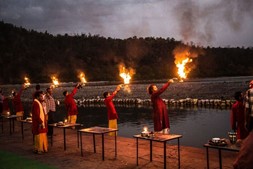
If you seek peace, be still. If you seek wisdom, be silent. If you seek love, be yourself.
Rishikesh boasts one of the world’s largest clusters of ashrams which are a melting pot of seekers from all over the world who come to find stillness and sanctuary within, hoping to feel peace and transcendence, through meditation; here yoga may start out as a physical practice, often becomes a way of life that teaches how to discover and draw upon the innate wisdom residing all men. The picturesque Paramarth Niketan located at the poetically named Swargashrama, hosts the annual International Yoga Festival – after all Rishikesh is the Yoga Capital of the World – and the International Sivananda Yoga Vedanta Centre, are both holistic, spiritually oriented institutions, dedicated to the teaching of classical yoga, meditation, and Vedanta.

“If happiness is the goal and it should be, then adventures should be top priority.” So said Richard Branson.
Rishikesh is not all spirituality and contorted limbs; it is an adventure lover’s paradise. Surrounded by hiking trails, some challenging and others less so, some weave into hikes to temples provide stunning views into town. One of the most picturesque treks is to the Maa Kunjapuri Devi Temple, a Shakti peetha along steep and winding mountain roads. Getting here is an epic and awe-inspiring adventure in itself, especially on a motorbike. On the way, rich forests, winding roads and a snow-covered Himalayan backdrop render travellers speechless and awe-struck.
Whitewater rafting is perhaps the most iconic adventure activity in Rishikesh and a unique opportunity to experience the holy river in all its glory. Negotiating this pristine, glacier-fed river, its untamed waves and currents on a raft is an experience unlike any other – a thrill for the novice, a challenge for the hardcore adventure junkie. The rapids here are aptly named and go by names like “The Wall”, “Initiation.” The inviting waters of the Ganga draw people to jump in. “It was an exhilarating experience,” Ajay said, after jumped off the raft and swam in the calmer waters.
There are some spectacular limestone waterfalls on the adjacent sloping hills and jungle waterfall trekking is a unique and fun filled activity. The steep banks of the Ganga have some epic cliff jumping spots. One can see groups of people launching off the larger boulders and sharp embankments into pools of calm Ganga water. Rishikesh also offers India’s highest bungee jump of eighty – three meters, where one can fall like a free bird. But the most exciting of all, is the thrill – in – the air Flying Fox. It is not for the faint hearted. One can either go alone or in a group of three and experience flying in the air at a mind whirling speed. Then there is the Giant Swing! The jumping process is different, and one enjoys a pendulum swing at the end. This means double the free fall of the bungee, with more speed and wilder thrill! After the swing, jumpers are lowered into the drop zone in the river, where water is just two feet deep.
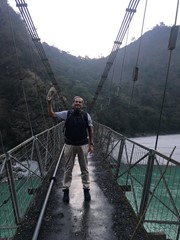
But it is not all pulse-racing, thrill-inducing activities. There are calmer and more serene outdoor experiences for the nature lover, the hiking enthusiast and the not-so-adventurous, who can enjoy walking, bird watching, wildlife safaris and al fresco meals on the banks of the Ganga.
Green forest hills, colourful orchards, and clean air serve as the backdrop for a complex of cafes, shops, meditation centers, restaurants, and hotels. The east side is almost free of traffic and one can meander among huts of sadhus, parks, and scores of small shops and stalls selling cotton clothes, gems, spiritual souvenirs and Hindu religious icons. Cafes on both sides overlook the river. Restaurants serving German breads and Israeli food sit happily with roadside chaat stalls, the aroma tantalising the senses. But for me, the most satisfying and unique was the local Garhwali food, with never-eaten-before dals and rotis, mouth-watering pickles, unusual chutneys and vegetables. While Chef Satya at the Taj created a variety of local delicacies, the best meal I had was at the Aloha Hotel. Here Chef Hari or Hari Bahia, as locals and friends address him, whipped up a feast that I can truthfully say was for the gods!

Sitting for dinner on the open-air terrace of our hotel in the crisp cold, under a star filled sky Ajay and I wondered what it would be like to find a cottage here in the mountains and come away to escape the noise and hectic activity of the city.
In each of us there dwells a wanderer, a gypsy, a pilgrim. What matters most on a journey is how deeply we see, how attentively we hear. I sat on a rock on banks of Ganga listening to the sounds of the river, as daylight slowly faded behind the mountaintops. There was serenity and a sense of something sacred; I could hear the silence and the voice from deep within, which if I practiced listening to, would ultimately lead me to that unending fount of joy.
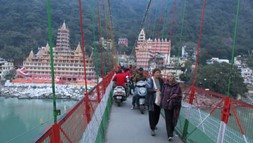



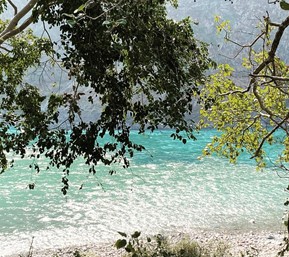







Well researched and presented
Comments are closed.